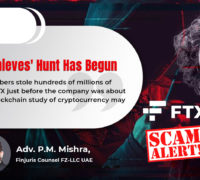Mysterious robbers stole hundreds of millions of dollars from FTX just before company was about to collapse. Blockchain study of cryptocurrency may give a solution. … Read More →
In general, the technologies that firms allude to when they talk about “the metaverse” might include virtual reality (defined by persistent virtual environments that exist even when you’re not playing) and augmented reality (which blends features of the digital and physical worlds). It does not, however, necessitate that those areas be accessed solely through VR … Read More →


